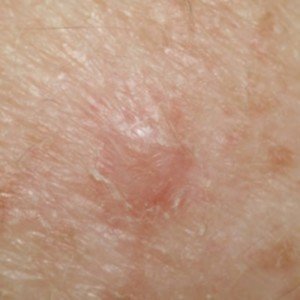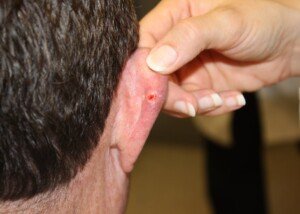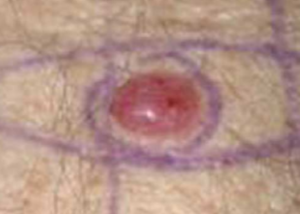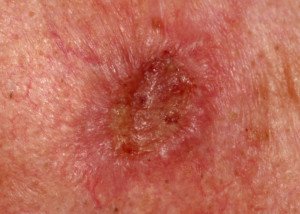
Here’s what a dermatologist has to say about frequency of flesh colored melanoma — which can go undetected during your self-exams.
Melanoma can present as flesh colored.
But just how often does this occur?
How common are flesh colored melanomas?
“Amelanotic (flesh colored) melanomas are a rarer type of melanoma,” says Dr. Rebecca Tung, MD, a
“The incidence of amelanotic melanoma is only 2-8 % of all melanomas.
“They often appear as flesh colored to reddish lesions, often on the skin of the trunk, and do not follow the usual ABCD rules (asymmetry, border irregularity, color changes, diameter of 6mm or larger or growing in size) of melanoma detection.”
Sometimes, this flesh or pinkish/red colored melanoma can pass as basal cell carcinoma or squamous cell carcinoma.
A basal cell carcinoma is the most common cancer in the world. This easily curable tumor grows very slowly and very rarely spreads beyond locally.
Squamous cell carcinoma can spread, but it’s nowhere near as deadly as melanoma.
Both of these skin cancers are strongly linked to exposure to the sun.
Alarmingly, the amelanotic melanoma can also pass as a common pimple or blemish.
“Patients often initially mistake this type of melanoma as scars or pink moles,” continues Dr. Tung.
“Even under a special magnifying device called a dermatoscope, the features which usually signal cancer are often absent.
“For these reasons, diagnosis is frequently delayed.”
If you don’t have a good feeling about a new spot and especially “pimple” on your skin, you should have it removed.
“Suspicious lesions should be biopsied to confirm the diagnosis,” says Dr. Tung.
“Treatment is surgical with wide local excision.
“If the lesion extends deeply into the skin, lymph nodes may also need to be sampled (a procedure called sentinel lymph node biopsy) to determine if they do or do not contain melanoma.”
Dr. Tung’s specialties include general dermatology with skin cancer surveillance, moles, melanoma, surgery (Mohs micrographic, laser, skin cancer reconstruction) and cosmetic dermatology.
specialties include general dermatology with skin cancer surveillance, moles, melanoma, surgery (Mohs micrographic, laser, skin cancer reconstruction) and cosmetic dermatology.
 Lorra Garrick has been covering medical, fitness and cybersecurity topics for many years, having written thousands of articles for print magazines and websites, including as a ghostwriter. She’s also a former ACE-certified personal trainer.
Lorra Garrick has been covering medical, fitness and cybersecurity topics for many years, having written thousands of articles for print magazines and websites, including as a ghostwriter. She’s also a former ACE-certified personal trainer.









































